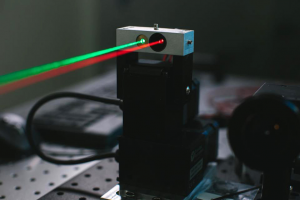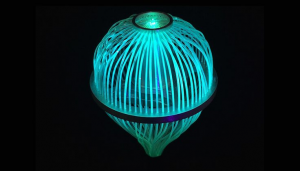

The key to successful laser internet, in a word, is fluorescence. Facebook’s Connectivity Lab, whose main purpose is to find and develop technology that puts high-speed internet into the hands of underserved communities, showcased their findings earlier this week in the scientific journal Optica. According to their research, the use of fluorescent optical fibers to collect light rather than traditional optics has led to a breakthrough in terms of feasibility. Basically, since the optical fibers don’t emit the same color they’re absorbing, a brighter light can be shined at them. This creates a much faster turnaround time than previous methods provided, at just under two nanoseconds. Plus, this new receiver technology would be far less complex and more affordable than the systems we rely on currently. Since free-space laser communication takes place in the visible or infrared spectrum, it wouldn’t require mechanical stabilization, expensive micro-motors, sensing, or processing. This in turn leads to a system that is less susceptible to interference from neighboring frequencies.


There are still several kinks to work through to bring laser-based communications to the masses. However, most of the problems lie in drone technology; not the lasers themselves. Most notable is the “twinkling” effect, experienced when atmospheric turbulence causes optical fluctuations that typically result in signal fading. Plus, the battery life of the drone crafts in their current iterations will be an important factor for researchers to take into account. Not to mention that the paper directly addresses “the need for new material tailored for communication applications” – the needed materials for mass production simply don’t exist right now. Nevertheless, we are one giant leap closer to laser-based internet this week than we were the week before. And since visible and infrared frequencies don’t come with the same imposing regulations as standard WiFi, skipping the arduous step of gaining government and federal agency approval could bring Project Aquila’s laser internet to the globe much sooner than you think.

 Laptop & Tablet Parts
Laptop & Tablet Parts




















